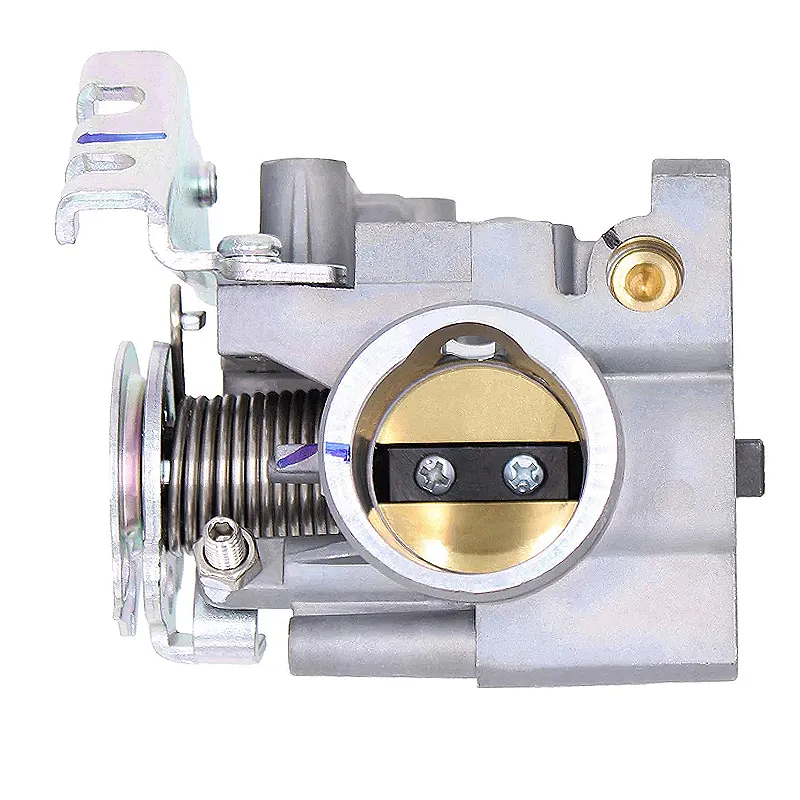In modern automotive engineering, fuel efficiency is a top priority for both manufacturers and drivers. As vehicles evolve to meet increasingly strict environmental standards and fuel economy requirements, components like the throttle body play a crucial role in achieving better performance with less fuel consumption. The throttle body regulates the amount of air that enters the engine, directly influencing how efficiently the air-fuel mixture burns during combustion. With the right configuration and calibration, a throttle body can significantly improve fuel economy without compromising engine responsiveness or power output.
One of the primary responsibilities of a throttle body is to control airflow into the intake manifold based on the driver's accelerator input. When the throttle body opens efficiently and precisely, the engine receives just the right amount of air for combustion. This precise regulation minimizes unnecessary fuel injection and prevents the engine from operating under unnecessary load. The result is smoother power delivery and a reduction in fuel consumption, especially during steady cruising or city driving conditions.
For optimal combustion, the air-to-fuel ratio must be carefully balanced. A well-functioning throttle body ensures that the intake air is delivered in accurate amounts, which allows the engine control unit (ECU) to inject the corresponding amount of fuel. If the throttle body delivers inconsistent airflow, it can lead to rich or lean mixtures, negatively impacting fuel efficiency. Modern electronically controlled throttle bodies improve this balance with real-time adjustments that respond to changes in driving conditions, thereby supporting more efficient fuel usage.
Traditional cable-driven throttle bodies have been replaced in many modern vehicles with electronic throttle control (ETC) systems, also known as drive-by-wire systems. These electronically controlled throttle bodies offer more accurate control over air intake, responding instantly to throttle input. ETC systems allow for finer modulation of the throttle plate, which enhances the precision of airflow management and reduces fuel waste during transitions between acceleration and deceleration.
Modern throttle bodies are increasingly integrated with the vehicle's ECU and various sensors. This integration allows for continuous monitoring and adjustment of airflow based on numerous parameters such as engine load, temperature, altitude, and driving habits. The throttle body acts as a key component in this network, enabling predictive adjustments that optimize combustion in real time. This not only leads to better fuel economy but also reduces emissions and enhances overall engine performance.

City driving involves frequent stops, starts, and variable speed limits, which can strain fuel efficiency. A responsive throttle body helps reduce fuel waste during idle periods and enhances acceleration control. By limiting excessive throttle input, the throttle body ensures that the engine operates within an optimal efficiency range even during short trips and congested traffic conditions.
On highways, maintaining a consistent speed is key to reducing fuel consumption. A throttle body that can regulate airflow smoothly at cruising speeds prevents unnecessary fuel injection. This stability improves the vehicle's mileage over long distances and helps drivers get the most out of every gallon of fuel. Additionally, smoother airflow transitions during overtaking or hill climbs contribute to an overall reduction in engine strain.
Like any precision component, the throttle body requires periodic maintenance to function optimally. Over time, carbon deposits can accumulate on the throttle plate and bore, disrupting airflow and leading to inefficient combustion. Regular cleaning of the throttle body helps maintain its responsiveness and supports consistent fuel economy. Some advanced vehicles may also require recalibration after cleaning to restore factory performance.
For enthusiasts looking to boost performance and fuel efficiency, aftermarket throttle body upgrades offer a viable solution. Larger or performance-optimized throttle bodies can increase airflow capacity and enhance throttle response. When paired with upgraded air intake systems and tuned ECUs, these components can deliver measurable improvements in both horsepower and fuel economy. However, it's essential to ensure compatibility with the vehicle's existing engine management system to avoid performance inconsistencies.
Efficient combustion not only saves fuel but also reduces harmful emissions. A well-functioning throttle body supports cleaner combustion by ensuring that the air-fuel mixture burns more completely. This efficiency lowers carbon monoxide, hydrocarbons, and nitrogen oxide emissions, helping vehicles meet modern environmental regulations. In hybrid vehicles, throttle body precision is even more critical in coordinating with electric motor input to maintain eco-friendly operation.
Many emission control systems rely on accurate airflow data to function correctly. The exhaust gas recirculation (EGR) system, for example, depends on stable intake airflow to reintroduce a portion of exhaust gases back into the combustion chamber. A reliable throttle body ensures that this process does not interfere with performance, maintaining the delicate balance between emissions control and fuel efficiency.
Throttle position sensors (TPS) and mass airflow sensors (MAF) work in tandem with the throttle body. If these sensors provide inaccurate readings, the ECU may miscalculate the fuel-air mixture, reducing fuel efficiency. Ensuring that all sensors are properly calibrated and functioning is essential for the throttle body to operate at its full potential.
Cold weather, high altitudes, and dusty environments can impact throttle body performance. For example, colder air is denser and may require recalibrated airflow to maintain efficiency. In dusty or off-road conditions, particles can clog or wear down the throttle mechanism. Understanding how environmental factors influence the throttle body allows drivers to take preventive measures, such as installing air filters or scheduling more frequent maintenance.
It is generally recommended to clean the throttle body every 30,000 to 50,000 miles, depending on driving habits and environmental conditions. Regular maintenance can help preserve fuel efficiency and prevent idle issues.
Yes. A dirty throttle body can restrict airflow, causing the ECU to inject more fuel than necessary. This leads to inefficient combustion and reduced fuel economy.
In many cases, yes. An upgraded throttle body can enhance airflow and throttle response, leading to improved fuel efficiency—especially when paired with other performance modifications.
For vehicles with electronic throttle control, recalibration may be needed after cleaning or replacing the throttle body to ensure proper synchronization with the ECU.
 Hot News
Hot News2024-07-02
2024-07-02
2024-07-02